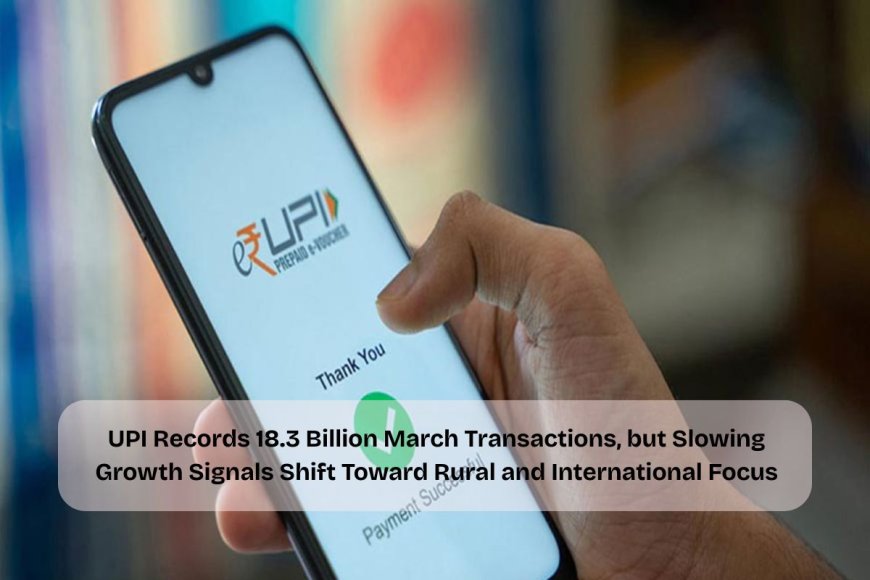UPI Faces Slower Pace, Needs Fresh Push for Rural and Global Expansion
UPI sets new transaction records, but growth slows as urban markets mature; rural and global expansion hold future promise.

India's Unified Payments Interface (UPI) continues to set new records, processing 18.3 billion transactions in March 2025, a 36% increase over the previous year. However, growth is decreasing compared to previous years, when it increased by more than 50% annually. The transaction value in March was Rs 24.77 lakh crore, rising 25.2% from last year—but still slower than previous growth rates.
This slowdown is mostly due to UPI's penetration of urban markets; future expansion into rural areas now necessitates larger investments and innovation. According to industry analysts, while digital payments continue to expand, the rate is slower than it once was. Some, like as Amrish Rau of Pine Labs, argue that funding for UPI in smaller towns has dried up, making it difficult for the platform to grow organically.
Despite this, UPI is responsible for 83% of India's overall payment volumes. Since its inception in 2016, growth has been fueled by the the government's digitalization push, smartphone adoption, and apps such as Google Pay and PhonePe. However, a Rs 1,500 crore incentive to encourage smaller transactions was challenged as insufficient for such a big ecosystem.
Meanwhile, UPI is expanding internationally to nations such as Singapore, UAE, France, and others. With urban growth slowing, analysts expect the next great leap to come from rural India and global adoption.
To increase reach and user experience, NPCI released Bhim 3.0, which includes features such as expense tracking and bill splitting, although it still falls behind popular apps.
In the future, developments such as UPI Autopay and global alliances could assist UPI enter its next growth phase.
This article is based on information from The Economic Times







